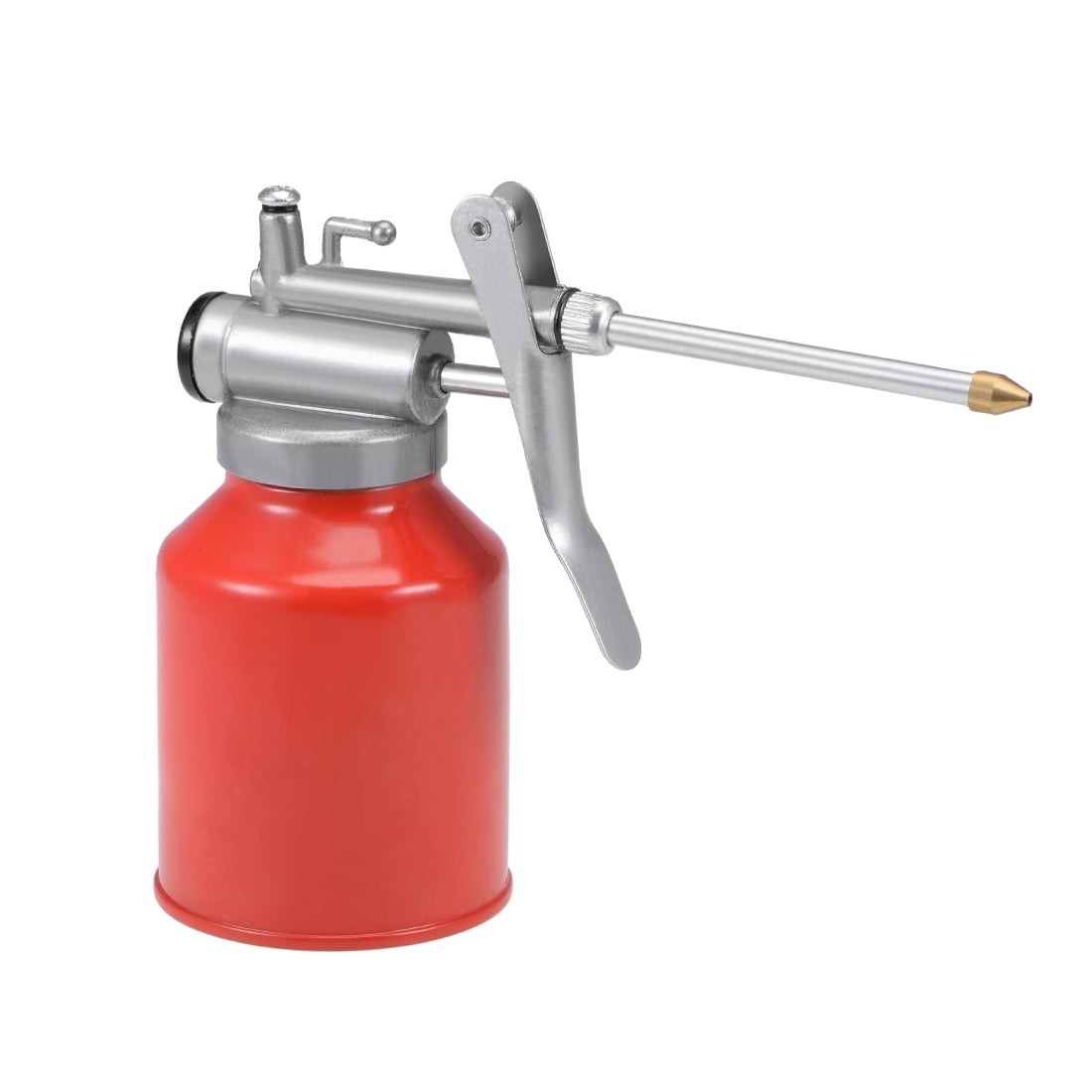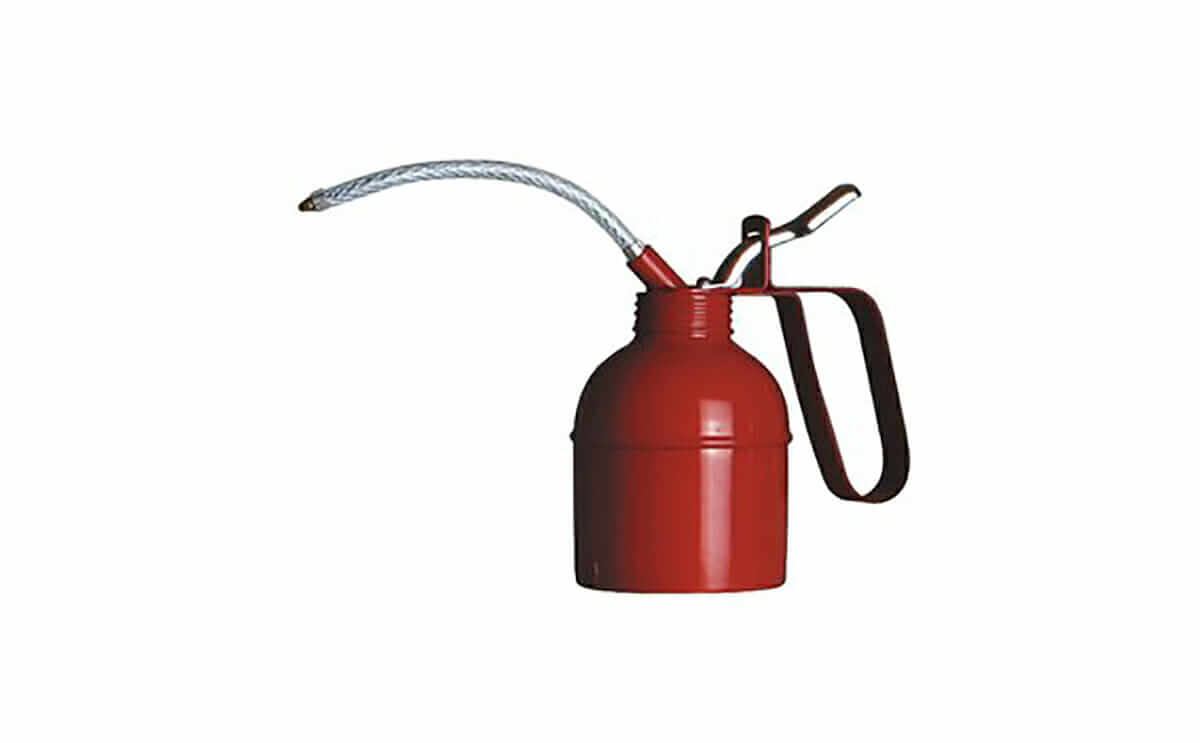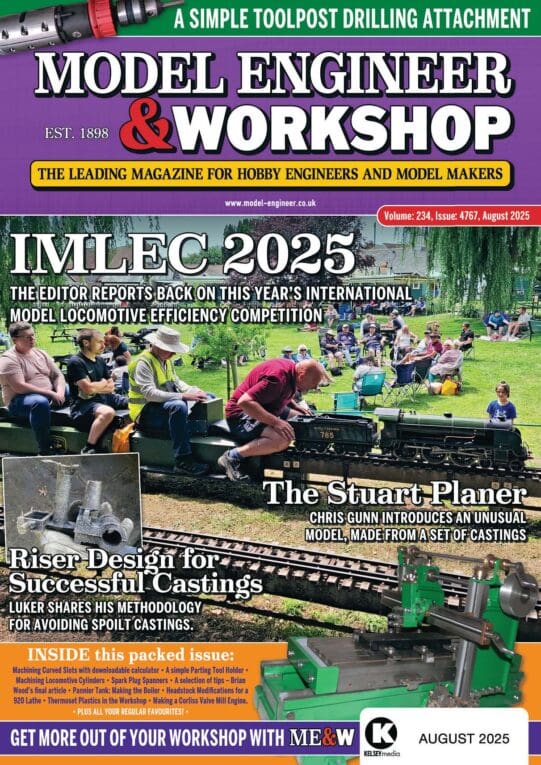
Cruel world that it is, I have yet to find a perfect oil can, and am of the opinion that no such thing has ever existed! They all leak and cause some sort of mess being filled or in action.
I have actually done a bit of research into this recently, and come to the conclusion that old vintage oil cans are less prone to leak than the modern ones like the one in your picture. The reason, according to my extensive research – leaving various oil cans in the Myford drip tray surrounded by various paper towels — is the modern oil cans all have small-bore, parallel spouts like the one in your picture.
The old cans with a large tapered spout, starting out at about a half inch diameter at the can and tapering down to the point at the dispensing end, do not leak.
The problem seems to be (and I stress seems in the absence of definitive testing) that thick viscous oil rises up the narrow parallel spout of the modern cans by capillary action, then gets over the curve at the top of the spout and runs downhill to the tip, whence it dribbles out, creating somewhat of a siphoning action at the same time.
Some oil cans, depending how fast the oil comes out and the design of the tip, dribble healthy droplets straight down onto the telltale paper towel under the end of the spout. Others, dribbling more slowly in more of a sickly ooze than definitive drops, have the oil dribble back down the outside of the spout and run down the outside of the reservoir can on to the strategically placed paper towel under its base. This, you would swear, is caused by the can leaking around the base seam area etc. But multiple oil cans over the years have been tested for leaks, coated with sealant etc etc and still ended up standing in a puddle of their own muck when left standing for any length of time. Very frustrating as you have found.
But a couple of recently acquired ancient oil cans with the traditional large diameter tapered spout passed the test with flying colours. The spouts are too large at the base to promote capillary action (according to my theory!) All paper towels left unsoiled.
So one is filled with ISO32 hydraulic oil and the other with whatever clean engine oil was leftover from the last oil change and both sit in the Myford drip tray, high and dry and not surrounded by the usual mess. The oil mess in the tray from the bearing drip feeders, it turns out, is minimal once the errant modern oil cans were shunted off and replaced with the period correct good ‘uns as below.

Standing your oil can on a square of paper towel and also wrapping some paper towel around the spout and securing with a rubber band for a few days or weeks will reveal if you have a dripper or a dribbler. (Or if as in one case I had, the old oil can has rust pinholes in the base from moisture that sat there for years at the bottom of the oil, but that is a different issue!)
SillyOldDuffer.







